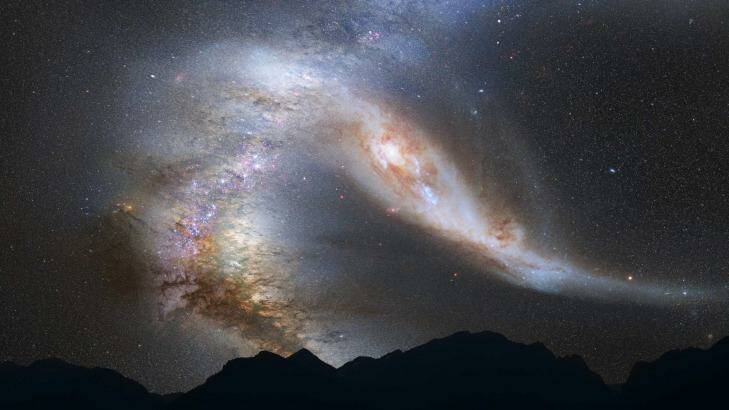


Subscribe now for unlimited access.
$0/
(min cost $0)
or signup to continue reading
The evidence is in: the universe is cactus.
After a wild youth about six or seven billion years ago, the universe is slowly dying. But you needn't book your table at the restaurant at the end of the universe just yet – the old age of the cosmos is likely to be very long and drawn out.
How do we know this? Professor Simon Driver at the University of Western Australia and his colleagues have, for the first time, produced the first fully empirical measurement of the energy output of the universe.
And the news is grim.
According to their findings, the universe is currently generating about half the energy it was just two billion years ago. This means that eventually the universe will stop generating energy and our cosmos will become a lifeless, cold abyss with the light from every star and galaxy snuffed out. The cold, dark relics of dead stars is all that will be left.
How long will it take?
Professor Driver said: "From here on, there is a gentle decline, which technically will go on forever. In about 100 billion years you'd be very hard pressed to find any optical photons our eyes could detect."
"Of course, by this stage the sun has already swallowed the Earth (in about 5 billion years) and our [Milky Way] galaxy will have merged with Andromeda (in about 10 billion years)."
So it's fair to say that Douglas Adams' "Don't Panic" remains a useful piece of advice in terms of cosmology.
"The universe is settling down on the sofa for a long, eternal slumber but we are still able to look at the photo album of its energetic youth," says Andrew Hopkins, head of research at the Australian Astronomical Observatory. He says the universe was at its peak in terms of star formation about six or seven billion years ago; about half the age the universe is now.
Dr Hopkins is co-author of the paper Galaxy and Mass Assembly panchromatic data release being presented today at the general assembly of the International Astronomical Union in Hawaii. The research is part of the Galaxy and Mass Assembly (GAMA) project, the largest multi-wavelength survey ever put together.
Starting with the Anglo-Australian Observatory in NSW, Professor Driver and his colleagues used seven of the world's most powerful telescopes on Earth and in space across 21 wavelengths for five years to measure the energy output of more than 220,000 galaxies. They looked back 2.3 billion years and found that the universe was producing about 2.5 x 10 to the power of 35 watts of energy per cubic megaparsec of space. It has now dropped to about 1.5 x 10 to the power of 35 watts per cubic megaparsec. (A megaparsec is about 3.26 million light years.)
The researchers looked at a small slice of the sky across almost the entire electromagnetic spectrum – from the far ultra-violet range, through visible light to the far infra-red and the edges of radio waves. And while the section examined may seem small – just 0.56 per cent of the whole sky – the data from the 220,000 galaxies is sufficient for the astronomers to be very confident of their findings.
"That sounds like quite a small amount," Dr Hopkins said. "But if you look at the simulated flight through of the galaxies you'll get an impression of just how much information there really is."
So will our descendants of the far future eventually see the stars and galaxies go dark?
Yes, says Dr Hopkins, but probably much earlier than at the time of the energy death of the universe. "It will be due to the accelerated expansion of the universe that we will eventually stop seeing stars and galaxies.
"Because the universe is expanding, eventually the galaxies will get further and further apart until ultimately – on the scale of hundreds of billions of years – the universe will be a cold, dark isolated place. We won't be able to see any other stars or galaxies and any sentient beings alive then will be very, very isolated indeed."
But Professor Driver says death may not be the end of all things. "There is one tiny glimmer of hope."
"We may have been here before," Professor Driver says. "Theorists believe the early universe also went through a period of inflation (which we're in again now). In that case it is argued that it suddenly stopped and dumped the dark energy driving this inflation into normal energy.
"This is highly speculative but it is possible that we're in a recursive universe, which periodically goes through periods of inflation followed by periods of activity and evolution, which eventually dwindle as we enter the next inflationary phase."
So that's something to look forward to.

